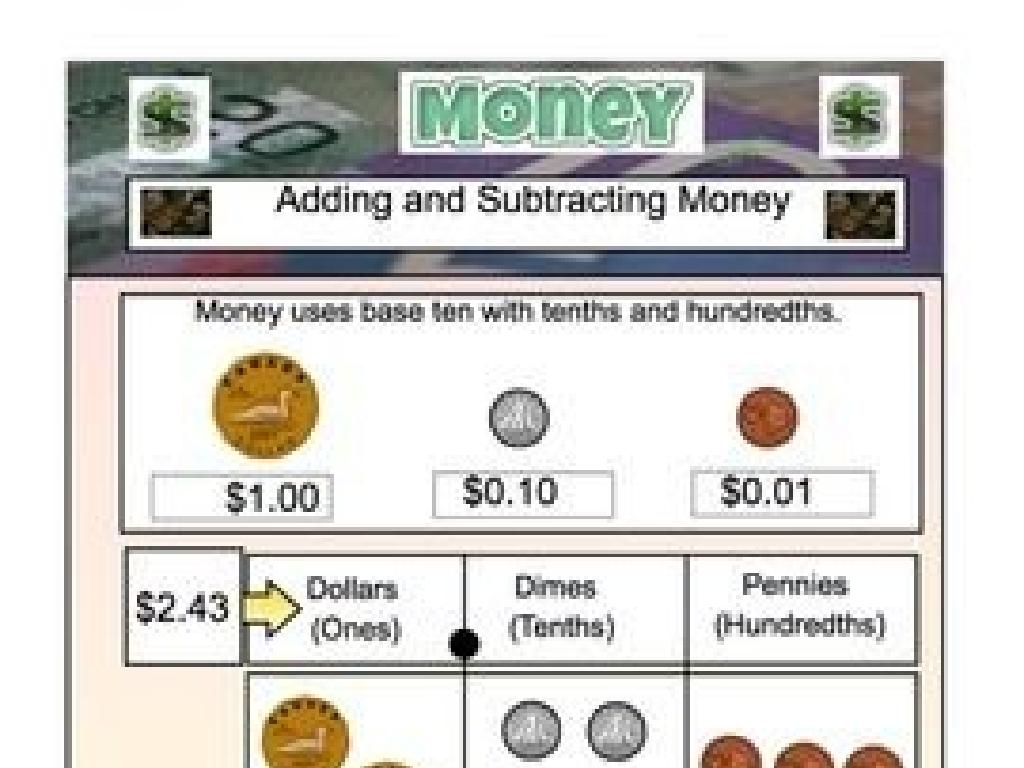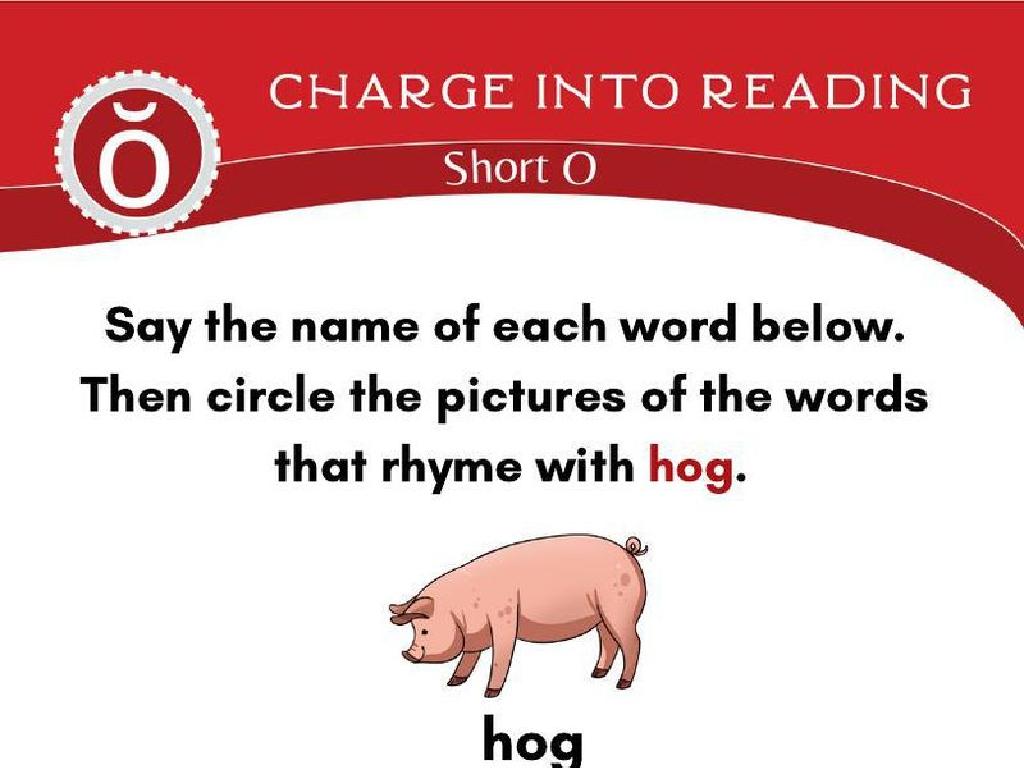Use Tables And Graphs To Identify Patterns About Kinetic Energy
Subject: Science
Grade: Seventh grade
Topic: Kinetic And Potential Energy
Please LOG IN to download the presentation. Access is available to registered users only.
View More Content
Exploring Kinetic Energy
– Energy defined: Capacity to work
– Types of energy: Kinetic vs. Potential
– Kinetic energy: motion, Potential energy: stored
– Today’s spotlight: Kinetic Energy
– Dive into kinetic energy’s concepts and applications
– Observing kinetic energy patterns
– Use tables/graphs to see speed, mass, and kinetic energy relationships
|
Begin the lesson by defining energy as the ability to do work, which sets the foundation for understanding the concept of kinetic energy. Differentiate between kinetic energy (energy of motion) and potential energy (stored energy) to provide a clear contrast. Focus the discussion on kinetic energy, explaining that it is the energy an object possesses due to its motion. Introduce the use of tables and graphs as tools to identify patterns in kinetic energy, such as how changes in an object’s speed or mass can affect its kinetic energy. Encourage students to think about everyday examples of kinetic energy and how it plays a role in their lives. Prepare to demonstrate how to plot data on graphs and interpret the resulting patterns.
Exploring Kinetic Energy
– Definition of kinetic energy
– Energy an object possesses due to its motion
– Kinetic energy is motion energy
– Anything moving has kinetic energy, e.g., a rolling ball
– Everyday life examples
– Cars moving, birds flying, water flowing
|
Begin the lesson by defining kinetic energy as the energy an object has because of its motion. Clarify that any object that is moving has kinetic energy, which can be observed in various forms in our daily lives. Provide relatable examples such as cars moving on the road, birds flying in the sky, or water flowing in a river to illustrate the concept. Encourage students to think of other examples where they observe motion and discuss how this relates to kinetic energy. This will help them understand that kinetic energy is all around us and is a fundamental concept in understanding the principles of physics and energy transfer.
Factors Affecting Kinetic Energy
– Mass and velocity: key factors
– Kinetic energy equation
– KE = 1/2 x Mass x Velocity^2 shows how energy is calculated
– Impact of mass on kinetic energy
– Increasing mass with constant velocity raises KE
– Impact of velocity on kinetic energy
– KE is more sensitive to velocity changes due to squaring
|
This slide aims to explain the relationship between mass, velocity, and kinetic energy. Emphasize that both mass and velocity are crucial in determining an object’s kinetic energy. The equation KE = 1/2 x Mass x Velocity^2 should be highlighted to show how kinetic energy is directly proportional to the mass and, more significantly, to the square of the velocity. Provide examples such as a slow-moving truck vs. a fast-moving bike to illustrate how mass and velocity variations impact kinetic energy. Encourage students to think about real-life scenarios where kinetic energy changes due to variations in mass and velocity, like sports or transportation.
Identifying Patterns in Kinetic Energy
– Create a table of kinetic energy values
– List objects, their mass, velocity, and calculate KE
– Observe changes with mass and velocity
– KE increases with mass and the square of velocity
– Identify patterns in the data
– Look for trends in KE as mass and velocity change
– Understand relationships in kinetic energy
– Grasp how mass and velocity proportionally affect KE
|
This slide aims to help students use tables to observe how kinetic energy (KE) is affected by changes in mass and velocity. Start by guiding them to create a table with columns for object, mass, velocity, and KE. Then, calculate KE using the formula KE = 1/2 mv^2, where m is mass and v is velocity. Students should observe that as mass or velocity increases, so does KE, with velocity having a squared relationship. Identifying these patterns helps students understand the proportional relationships in kinetic energy. Encourage students to predict KE for different mass and velocity values to reinforce the concept.
Graphing Kinetic Energy
– Plotting kinetic energy on a graph
– Use speed and mass to plot KE on the y-axis against time on the x-axis.
– Graph shape and kinetic energy
– The graph typically forms a curve, showing how KE changes with speed.
– Interpreting graphs for patterns
– Look for trends like increasing or decreasing energy levels over time.
– Activity: Create your own graph
|
This slide introduces students to the concept of graphing kinetic energy as a way to visualize how it changes over time. Begin by explaining that kinetic energy (KE) can be calculated using the mass and velocity of an object, and this value can be plotted on a graph with time as the independent variable. The shape of the graph can indicate whether an object is accelerating or decelerating. Students should learn to interpret these graphs to identify patterns such as constant speed (straight line) or acceleration (curved line). As an activity, have students create their own graphs using hypothetical or experimental data to reinforce their understanding of the relationship between kinetic energy and motion.
Kinetic Energy in Action
– Transportation: Impact of speed
– Cars and planes show KE changes with varying speeds.
– Sports dynamics: Balls’ motion
– The movement of balls in sports like baseball or soccer.
– Daily life: Running and cycling
– KE increases with our speed while running or cycling.
– Observing KE patterns
|
This slide aims to help students recognize the practical applications of kinetic energy (KE) in real-world scenarios. By examining transportation methods such as cars and planes, students can see how kinetic energy changes with the speed of these vehicles. In sports, the motion of balls during games provides a clear example of kinetic energy in action. Everyday activities like running and cycling also demonstrate kinetic energy, as the energy increases with the speed of the movement. Encourage students to use tables and graphs to identify patterns in kinetic energy, such as how it increases with velocity. This understanding will help them grasp the concept of KE more concretely by relating it to familiar experiences.
Class Activity: Kinetic Energy Experiment
– Gather materials: cars, ramp, stopwatch, tape
– Objective: Observe velocity and ramp slope
– How does changing the slope affect the car’s speed?
– Record observations in a table
– Use the table to note down speed at different slopes
– Plot observations on a graph
– Graph the results to visualize the speed pattern
|
This activity is designed to help students understand the relationship between the slope of a ramp and the velocity of a toy car, which is an application of kinetic energy. Students will work in groups to set up the experiment using the provided materials. They will measure how fast the car travels down ramps of different slopes using the stopwatch and measuring tape. Students should record their observations in a table, noting the slope of the ramp and the corresponding velocity of the car. After completing the measurements, students will use the data to create a graph, which will help them visualize the pattern between slope and velocity. Possible variations of the activity could include changing the weight of the cars, the surface of the ramp, or the height from which the car starts. The teacher should circulate to ensure students are conducting the experiment correctly and assist with any difficulties in measurement or recording.
Kinetic Energy: Patterns & Graphs Recap
– Recap of kinetic energy
Kinetic energy is the energy of motion, dependent on mass and velocity.
– Tables & graphs for patterns
Visual tools like tables and graphs reveal trends and relationships in data.
– Significance in science
Understanding these patterns is crucial for predicting and analyzing motion.
– Engage in Q&A session
|
This slide aims to consolidate the students’ understanding of kinetic energy and the use of tables and graphs to identify patterns. Begin by reviewing the key concepts of kinetic energy, emphasizing its dependence on mass and velocity. Highlight how tables and graphs serve as essential tools for visualizing and identifying patterns in kinetic energy data, aiding in the comprehension of scientific concepts. Stress the importance of these patterns in the broader context of physics and science as a whole. Conclude with a Q&A session to address any uncertainties and to reinforce learning. Encourage students to ask questions and discuss the applications of kinetic energy in real-world scenarios.






